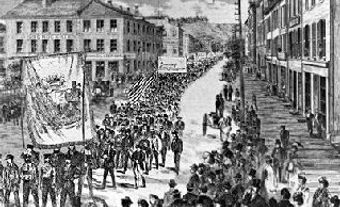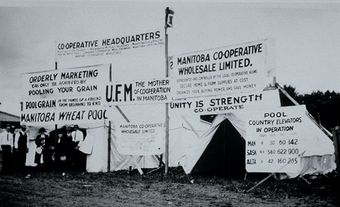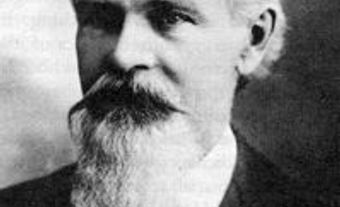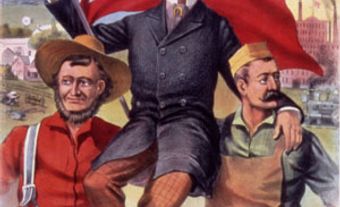The Co-operative Commonwealth Federation (CCF) was founded in Calgary in 1932. It was a political coalition of progressive, socialist and labour groups. It sought economic reform to help Canadians affected by the Great Depression. The party governed Saskatchewan under Premier Tommy Douglas, who went on to be the first leader of the federal New Democratic Party (NDP). The CCF merged with the Canadian Labour Congress (CLC) to form the NDP in 1961. Although the CCF never held power nationally, the adoption of many of its ideas by ruling parties contributed greatly to the development of the Canadian welfare state.
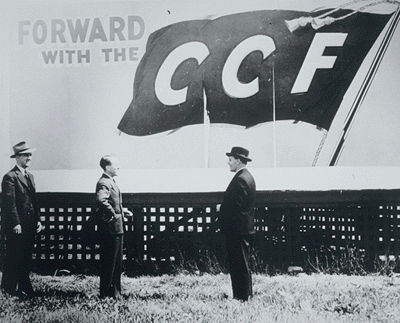
Farmers and Unions
The CCF’s founders were a mix of farmers’ organizations (including the United Farmers of Alberta, which governed that province); academics in the League for Social Reconstruction (LSR); and a Ginger Group of MPs in Ottawa allied with farmer and trade unions.
In 1933, the party met in Regina, where it chose James Shaver Woodsworth as its first president. Woodsworth, a social worker, had been a Manitoba Independent Labour Party MP since 1921. He was the acknowledged leader of the CCF both inside and outside Parliament. The party also adopted the Regina Manifesto, which set out the party’s goals. These included creating a mixed economy through the nationalization of key industries and by establishing a welfare state with universal pensions; health and welfare insurance; family allowances; employment insurance; workers’ compensation and similar programs.
The CCF quickly established itself in Canadian political life. It elected members to Parliament and to several provincial legislatures. In 1935, seven CCF MPs were sent to Ottawa; the party captured 8.9 per cent of the popular vote. In 1940, eight MPs were elected with 8.5 per cent of the popular vote.

Growth Years
At the beginning of the Second World War, the CCF was split between supporters of Woodsworth’s uncompromising pacifism, and supporters of Canada’s entry into the conflict.
Major James William Coldwell, a teacher who succeeded Woodsworth as leader during this period, favoured Canada’s participation. Under his moderate guidance, the party began to flourish. It won the critical York South by-election in February 1942; as a result, the Conservative Party leader, former prime minister Arthur Meighen, was prevented from winning a seat in the House of Commons. The CCF also topped a September 1943 national Gallup poll and came second in that year’s Ontario elections. In a key development, the party took office in Saskatchewan under Tommy Douglas. Then in the 1945 federal election, the CCF elected 28 MPs to Ottawa and captured 15.6 per cent of the popular vote.
Support Fades
Although the CCF was well established, it gradually declined in popular appeal after the war. A democratic socialist party, it was accused of being associated with communism. (See Communist Party of Canada.) During Cold War tensions, this image was damaging. An attempt was made in 1956 to soften the party’s image. The Regina Manifesto was replaced with a new, moderate document; the Winnipeg Declaration. However, this could not reverse the trend. In 1958, the party suffered a disastrous defeat; only eight MPs were elected with a mere 9.5 per cent of the popular vote. Both Coldwell and Deputy Leader Stanley Knowles were defeated in their ridings. (See Elections of 1957 and 1958.)
NDP Formed
Following this debacle, an arrangement was negotiated by David Lewis between the CCF and the Canadian Labour Congress (CLC). The CLC was urged by Lewis to save democratic socialism in Canada; it agreed to enter a formal alliance with the CCF to create a new party. In 1961, the CCF entered a new phase. It emerged from a founding convention as the New Democratic Party.
See also Editorial: The Rise of the Co-operative Commonwealth Federation; Working-Class History; Collectivism; Co-operative Movement; League for Social Reconstruction; Labour Party; United Farmers of Canada; Canadian Party System.

 Share on Facebook
Share on Facebook Share on X
Share on X Share by Email
Share by Email Share on Google Classroom
Share on Google Classroom

